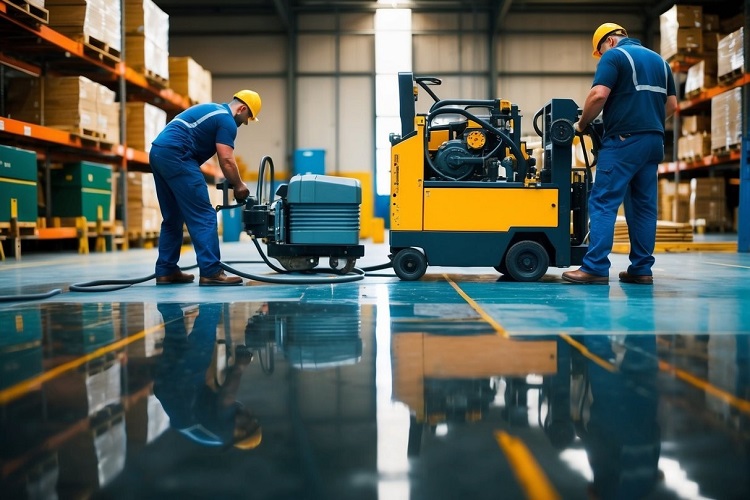Workplace injuries are a significant concern for employees and employers alike in Florida. The most common causes of these injuries include slips, trips, and falls, overexertion, and being struck by objects. Understanding these prevalent causes can help in fostering safer work environments and reducing incidents.
In different industries, the nature of work plays a crucial role in the types of injuries experienced. For instance, construction sites often see falls and being struck by tools or equipment, while offices may face more ergonomic issues leading to overexertion injuries. Recognizing these factors is essential for proactive safety measures.
Awareness and prevention strategies are vital for minimizing risks associated with workplace injuries. By focusing on common hazards and understanding their implications, organizations can implement effective safety training and protocols that benefit both workers and the workplace as a whole.
Table of Contents
Common Causes of Workplace Injuries
Workplace injuries can significantly impact employee safety and productivity. Key causes include environmental hazards, human factors, and equipment-related issues. Understanding these causes is essential for effective prevention strategies.
Slips, Trips, and Falls
Slips, trips, and falls are prevalent causes of workplace injuries in Florida. These incidents can occur due to wet surfaces, uneven flooring, or clutter in work areas. Statistics indicate that falls account for a substantial portion of workplace injuries, impacting various sectors such as construction, retail, and healthcare.
To mitigate these risks, employers should implement regular safety audits. They can provide non-slip mats, adequate lighting, and proper signage to alert staff to potential hazards. Training employees in hazard recognition is vital. This can dramatically reduce incidents related to slipping, tripping, or falling.
Overexertion and Repetitive Stress Injuries
Overexertion injuries arise from heavy lifting, pushing, or pulling. Workers in physically demanding jobs, such as warehousing or manufacturing, face high risks. Repetitive stress injuries (RSIs) emerge from repetitive motions or prolonged exposure to the same posture. Office workers may experience RSIs from extensive typing or poor ergonomics.
To combat these injuries, companies should emphasize ergonomic assessments. Training on proper lifting techniques and job rotation can help reduce strain. It’s important for employers to encourage regular breaks to prevent fatigue. Implementing these measures can lead to healthier, more productive employees.
Struck by or Against Objects
Incidents involving being struck by or against objects are serious concerns in many workplaces. These injuries can occur when tools or materials fall from heights or when workers inadvertently collide with machinery or equipment. The construction and manufacturing industries report a higher frequency of such incidents.
Employers can minimize risks by enforcing strict protocols for tool storage and workspace organization. Training sessions on safety practices around machinery and the use of protective gear can further reduce incidence rates. Regular inspections of work sites can identify potential hazards, allowing for timely interventions.
Equipment-Related Hazards
Equipment-related hazards represent another major cause of workplace injuries. Malfunctioning machinery, inadequate safety guards, and improper use of tools can lead to serious accidents, even fatal workplace accidents. Workers may face injuries from machinery entanglements or electrical failures.
To enhance safety, employers should prioritize regular maintenance and inspections of equipment. Implementing comprehensive training programs on proper equipment use is essential. Using appropriate personal protective equipment (PPE) can also safeguard employees against potential injuries. By addressing equipment-related risks proactively, workplaces can protect their employees effectively.
Prevention and Safety Measures
Ensuring a safe workplace is crucial for reducing injuries in Florida’s work environments. Implementing targeted strategies can significantly mitigate risks and enhance employee well-being.
Safety Training and Education
Regular safety training is vital for all employees. This training should cover proper procedures, hazard recognition, and emergency response. Engaging employees through hands-on training and scenario-based learning enhances retention and application of safety practices.
Educational programs can also include workshops and refresher courses. These programs raise awareness about specific risks in various industries, such as construction or healthcare. Incorporating real-life examples helps employees understand the importance of adhering to safety guidelines.
Fostering a culture of safety involves encouraging open communication. Employees should feel comfortable reporting hazards or risky behaviors without fear of reprisal.
Workplace Safety Programs
Implementing workplace safety programs establishes a systemic approach to injury prevention. These programs often involve regular assessments of policies and procedures to identify weaknesses.
Safety committees can play a key role in these programs. They typically consist of representatives from different departments who collaborate on safety initiatives. Regular meetings allow for discussing incidents, reviewing safety protocols, and proposing improvements.
In addition, incentives can motivate employees to actively participate in safety practices. Reward programs for those who demonstrate exceptional adherence to safety standards can foster a proactive attitude towards workplace safety.
Personal Protective Equipment
Personal protective equipment (PPE) is essential in minimizing exposure to workplace hazards. PPE includes items like helmets, gloves, goggles, and respirators, tailored to the specific risks of each job.
Employers are required to provide the necessary equipment and ensure employees know how to use it properly. Regular inspections of PPE can help maintain its effectiveness and identify when replacements are needed.
Training employees on the proper use and limitations of PPE enhances effectiveness. Encouraging a commitment to using PPE consistently reduces the likelihood of injuries significantly.
Regular Equipment Inspections
Regular equipment inspections are a critical component of workplace safety. Procedures should include both routine checks and detailed evaluations of machinery and tools.
Identifying potential hazards through inspections allows for timely maintenance or replacement. This proactive approach reduces the likelihood of equipment-related accidents, which can lead to severe injuries or fatalities.
Documentation of inspection findings helps track compliance and areas requiring improvement. Employers should ensure that all employees are trained to report any equipment issues immediately to maintain a safe working environment.

